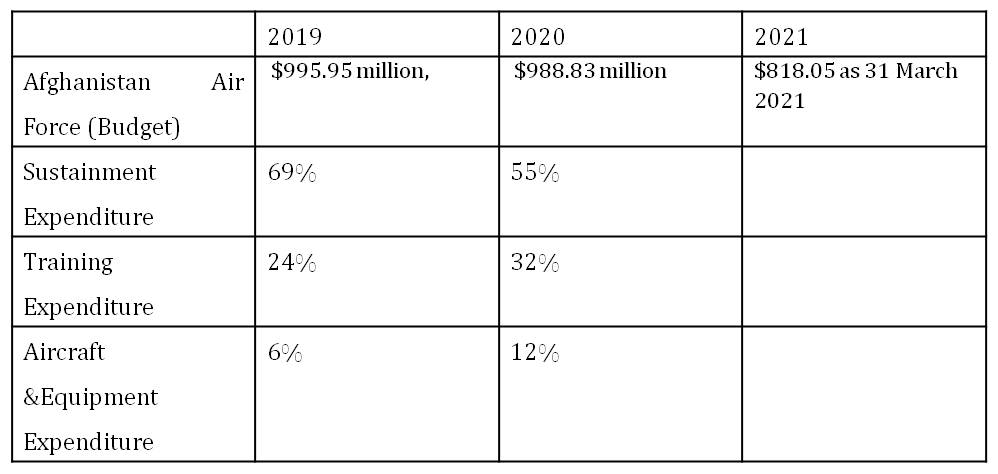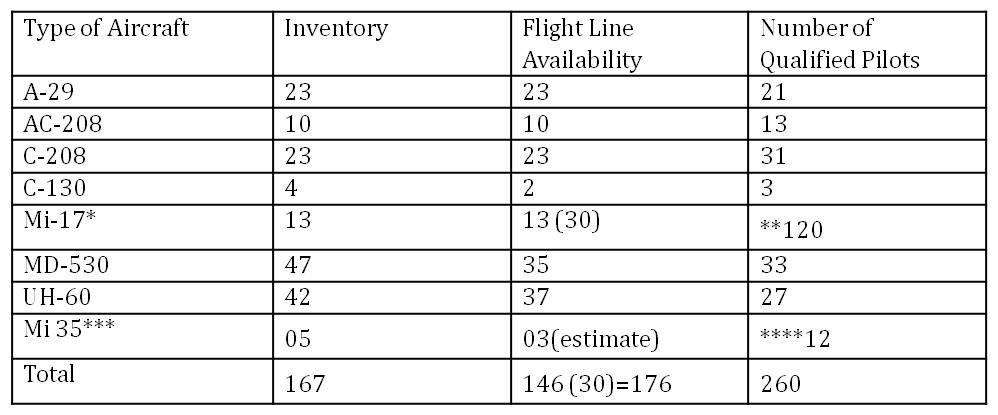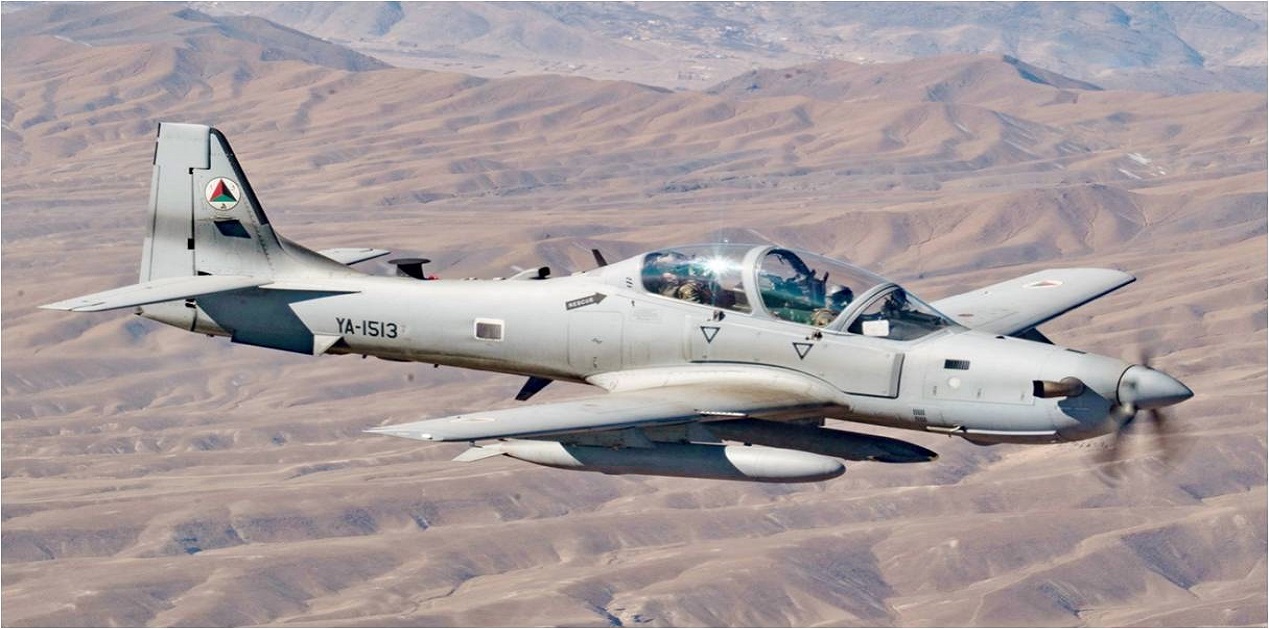Introduction
The US and coalition military forces are withdrawing from Afghanistan after 20 years. The decision was announced by the US president and the withdrawal completion date has been set as 11 Sept 2021. There were many actors which played a part in the intervention by the US and its allies and military was the biggest such actor. While within the military the various services performed their roles and some will continue to perform that role even after the physical withdrawal. Air power largely ensured the objectives of the American and NATO/ISAF forces were met and still are the force of choice for sustaining the abilities of the Afghan National forces against the Taliban and the Al Qaeda. As the withdrawal gains pace there is an increasing volume of commentary on the importance of air power to tilt the balance in favour of the ANSDF (Afghanistan National Defence and Security Forces), to maintain the present government in power by restricting the expansion of the Taliban and simultaneously increasing the writ of the Afghan Government. The strategic outcomes brought about by the performance of the AAF (Afghanistan Air Force) and ANDSF as a whole will affect the India and its neighbourhood.
The US task for taking military action was set in motion on 12 September 2001 and it commenced operations on 07 October. The military response of the US in Afghanistan was named Operation Enduring Freedom with NATO air strikes on Taliban and al Qaeda targets. By December 2001, most campaign goals had been achieved with Al-Qaeda’s infrastructure in Afghanistan destroyed and the Taliban regime was removed in 102 days after the 11 September attacks.
Now after almost 20 years air power as the tipping force is again in the calculus, but this time to save the regime. The big difference is that earlier it was the resources of the US military and allies which were utilized along with facilitation by some countries towards transit and basing to tackle the Taliban and Al Qaeda forces. But now in the withdrawal or retrograde phase of the US and NATO forces, AAF a key component of the ANDSF will be the pivot element present to fight the Taliban.
Afghanistan Air Force
The Afghanistan Air Force (AAF) has headquarters in Kabul which provides command and control of 18 detachments and three wings: the Kabul Air Wing; the Kandahar Air Wing; and the Shindand Air Wing and has 8000 personnel approximately having an annual budget of approximately one billion dollars over the previous 2 years as well as in the current year. The major expenditure was towards sustainment, training and equipment & aircraft for the years of 2019 and 2020 respectively as per Table 1.

The sustainment and equipment expenditure costs are primarily for contractor-provided maintenance; major and minor repairs and aircraft upgrades; and procurement of parts, supplies, and training equipment for the AAF’s in-country inventory of seven platforms as shown in Table 2.

*There are additional 30, Mi-17 helicopters estimated by IISS in its 2021annual report with Special Mission Wing (SMW).
**The pilots associated with these Mi-17 (13+30) can be in the region of about 120. This is a snapshot as well as estimation based on professional experience.
***The IISS estimates 05, Mi 35 helicopters in its 2021 report.
****The pilots estimated could be 12.
Pilot training on platforms both fixed wing and rotary wing require investment of time and money and comprises one of the biggest expenditures under the head of training as they are carried out in the US or third countries. In the context of the current withdrawal of the forces there are a large number of pilots still in training or inexperienced. The deficiency in numbers of pilots at present is being made up by training staff the US and TAAC-Air forces. These numbers will reduce as the withdrawal is completed.
The third interesting dynamic with AAF are the maintenance personnel which look after the aircraft and keep them fly-worthy. A per reports of the Office of the Assistant Secretary of Defense for Sustainment, the US DoD report of Enhancing Security and Stability in Afghanistan and the US Lead Inspector General Report all indicate a criticality in the availability of trained maintenance manpower within the country which can be harnessed by the AAF. The past year 2020 had also affected the AAF in maintenance training and sustainment because of COVID which resulted in lack of presence on the ground of the mentor contractors. At present majority of the platforms as per table 2 are serviced by a sizeable quantity of contractors hired by the US and NATO countries for training AAF organic personnel and sustaining air operations in the country. The levels of maintenance which are required are quite extensive as the Western Air Forces follow a 3 level system with the flight line being the lowest at level 3 and increasing to level 1 which is the most detailed. So across fleets other than Mi-17 in which the AAF has sufficient capacity for all levels except major overhaul for which the aircraft is sent to Europe after a fixed number of hours which translates into every 3-4 years.
For training for the first level of maintenance to reach an average level of proficiency, the time required on an average is 18 months and an advance level 7 and half years. “As of January 2021, the Afghan Air Force (AAF) has filled just under half of its maintainer positions with personnel trained and certified in the required aircraft-maintenance specialties and at the required certification levels.”3 The remaining support is being met by the contractors under guidance by TAAC-Air (Train, Advise, and Assist Command). The Contract Logistics Support (CLS) chain is the thread for sustenance, training and spares which is used by the US and NATO to maintain AAF outside its organic capability.
The AAF undertakes wide array of missions independently such as air assets for logistics, resupply, humanitarian relief efforts, return of human remains, medical evacuation (MEDEVAC), casualty evacuation (CASEVAC), non-traditional ISR, air interdiction, close air attack, armed over watch, and aerial escort missions. The withdrawal has resulted in the increase in the tempo of the offensive by the Taliban as also in a greater flying effort by the AAF, thus adding to the need of maintenance activities.
Since the US-Taliban agreement on withdrawal state that all contractors also would need to be withdrawn this puts a question mark on the sustainability in terms of trained manpower both for pilots and maintenance as well as time delays for the AAF fleet to be in action to achieve its strategic objectives focused against the Taliban as well as supporting the ground troops strung out in Afghanistan. So what do all these events tell or effect the players?
Insights
One of the lessons or outcomes is the need for a sustained investment in air power in kinetic conflicts to have favorable outcomes. Even though the US and NATO started the process around 2015 in earnest for an organic AAF, training of pilots and maintenance crews to a level of proficiency requires time. In the case of the AAF, the pilots have performed exceedingly well from a year of commencing flying to operational tasks in some aircraft but these are not sustainable because of dwindling numbers due of attrition. Thus money, time and mentorship investments are key in sustaining a proficient air force.
The AAF is a thoroughly professional force acknowledged by the US as well as NATO countries but resource challenges will affect performance. That then may lead to the ability of the Taliban to increase their tempo of operations subsequently, the alternatives to which is the US forces to have organic air power available of carrier based assets in the Arabian Sea or “Over the horizon” based support coming from Middle East or in countries surrounding it. The cost and time penalty for mission effectiveness of carrier based aircraft or from bases in the Middle East would be expensive, time consuming and not effective for time sensitive targeting (minimum of 7 hour lead time required).
The next concern is of the US basing some air assets in neighbouring countries especially Pakistan covertly or overtly from an Indian perspective. This possibility cannot be ruled out but due to the prevailing domestic situation in Pakistan and previous history of the US drone forces4 based and the sheer quantum of forces required to change the situation on the ground in Afghanistan, the probability seems remote but for some limited intelligence gathering capabilities which would be operated covertly. Keeping some of these events taking place on the ground during the withdrawal of forces, India needs to plan for strategies for support or intervention or mitigation depending on how it interprets the situation.
Endnotes
- SIGAR’s 51st quarterly report
- SIGAR’s 51st quarterly report
- Special Inspector General for Afghanistan Reconstruction (SIGAR): SIGAR’s 2021 High-Risk List to 117th Congress
- https://www.dawn.com/news/1625661
(The paper is the author’s individual scholastic articulation. The author certifies that the article/paper is original in content, unpublished and it has not been submitted for publication/web upload elsewhere, and that the facts and figures quoted are duly referenced, as needed, and are believed to be correct). (The paper does not necessarily represent the organisational stance... More >>
Image Source: https://commons.wikimedia.org/w/index.php?curid=93594188











Post new comment